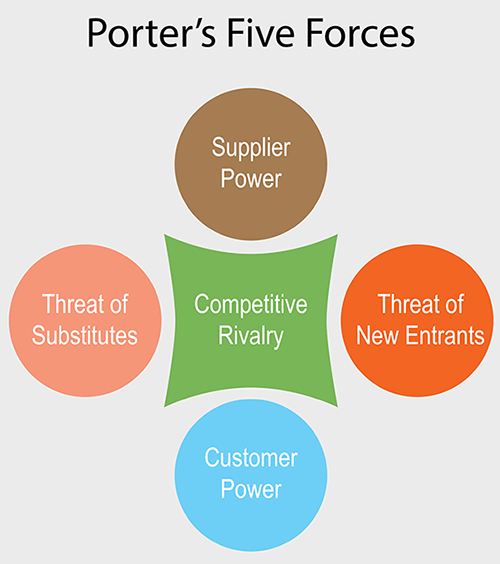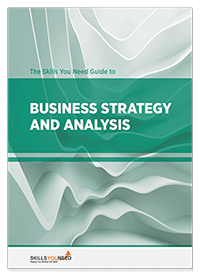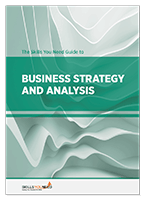Porter’s Five Forces
See also: Strategic ThinkingSince Michael Porter published his ‘five forces’ framework in 1979, it has gone on to become one of the most widely used frameworks for strategic decision-making in business.
In particular, it helps organisations to explore the competitiveness of their industry or environment, and identify where they can best make a profit.
Porter’s Five Forces was designed to help organisations to assess their environment and industry in a slightly more scientific and structured way than a SWOT (Strengths, Weaknesses, Opportunities, Threats) analysis. It does, however, have a similar purpose—to help with strategic decisions about ‘where next?’, ‘how can we best make a profit?’ and ‘where do our best opportunities lie?’
The Five Forces
Porter’s Five Forces is a deceptively simple framework that can be used both at a relatively high level, and also in a very in-depth and detailed analysis.
The five forces are:
Competitive rivalry
This describes the number and strength of companies in that sector or industry. In other words, how many other organisations are doing the same thing as you?
Threat of substitutes
This describes whether it is easy for customers to switch to another supplier, product, or way of doing things. For example, if you have a unique product, it may not be easy to switch to an alternative supplier, but customers may be able to find another way of doing things that does not involve your product. In other words, the substitution may be at the level of product or processes.
Threat of new entrants
This force explores whether it is easy for new companies to join the market and therefore compete. For example, are there major barriers to entry, such as needing to build or acquire a factory, or buy an operating licence? Are there economies of scale that only come from having multiple sites? Does brand reputation matter? Are there forthcoming changes to regulation that will open the market up to new competitors? All these make the industry more or less attractive to new potential rivals.
Supplier power
This describes whether it is easy for suppliers to raise their prices. For example, in a market where there are a lot of suppliers, and their products are very similar, if one raises the price, you can simply go elsewhere. However, if you only have one supplier making a unique component, then that supplier can control the market and set the prices.
Customer power
This final area describes whether buyers can drive prices down. This generally depends on the number of customers you have, and how much they buy. If you only have a few customers, then you will need to keep them all, so they have more power. If, on the other hand, you have a lot of customers, but they each only spend a small amount with you, then they have much less power.
Porter's five forces are generally pictured as a group, with competitive rivalry in the middle, the two ‘horizontal’ forces (threat of substitutes and new entrants) to either side, and the two ‘vertical’ forces (supplier and customer power) top and bottom.

Using Porter’s Five Forces for Analysis
The first step in using Porter’s Five Forces is to define your industry.
You should, ideally, use a relatively defined product or service area, rather than a broad area such as ‘construction’, as this is easier to manage.
Porter himself suggested that ‘line of business’ was the right level. The point is to ensure that the forces can be defined relatively easily for the industry that you choose, and there is no conflict within each force at that level.
The next step is to go through each of the five forces, and establish the position with respect to your industry or line of business. For each force, it is worth taking time and trouble to get to grips with the detail. The more information you have, the better the analysis, and the clearer the picture.
WARNING!
As with any analysis, the outcome of Porter’s Five Forces will only be as good as the data that you put in. If you really want value from the analysis, you need to spend time gathering information about your industry and environment.
This means, in practice, NOT guessing about the number of companies, or the power of suppliers, but actually finding proof, including sales figures, market research and details of your competitors.
The idea is to get a good understanding of the security of your position in that market. In other words, how sustainable are your profits?
For example:
- In a market characterised by lots of existing competitors, and low barriers to entry, where the products are commodities, it will be hard to keep making long-term profits. Prices will be driven down, and margins will become tighter. However, a new model of business could be profitable (think Amazon’s entry into book-selling).
- In a market in which you have a unique product that is very hard to substitute, and there are few existing competitors, you will probably have a long-term source of good profits. Products controlled by patents are a good example of this type of market.
Why does this matter?
You should concentrate your energies on the markets where you either:
- have the best chance of sustainable long-term profits; or
- where you really have to compete in order to have access to markets with better (sustainable, long-term) profits.
Relying on Porter’s Five Forces
Like many other strategic analysis tools, Porter’s Five Forces is relatively simple, and therefore only provides a snapshot of the industry. It has also been acknowledged as having some weaknesses (for example, it does not recognise the issue of collusion, or strategic partnerships).
An organisation that relied only on this framework would therefore be naïve.
When carrying out strategic analysis, it is important to use a range of tools and frameworks to get the broadest possible picture of the situation, the industry and the organisation.
There is, however, a balance to be struck between getting enough information to inform your decision-making effectively, and waiting forever for the perfect set of insights. Anyone struggling with this balance may find our page on Avoiding Procrastination helpful.
Further Reading from Skills You Need
The Skills You Need Guide to Business Strategy and Analysis
Based on our popular management and analysis content the Skills You Need Guide to Business Strategy and Analysis is a straightforward and practical guide to business analysis.
This eBook is designed to give you the skills to help you understand your business, your market and your competitors.
It will help you understand why business analysis is important for strategy—and then enable you to use analytical tools effectively to position your business.


